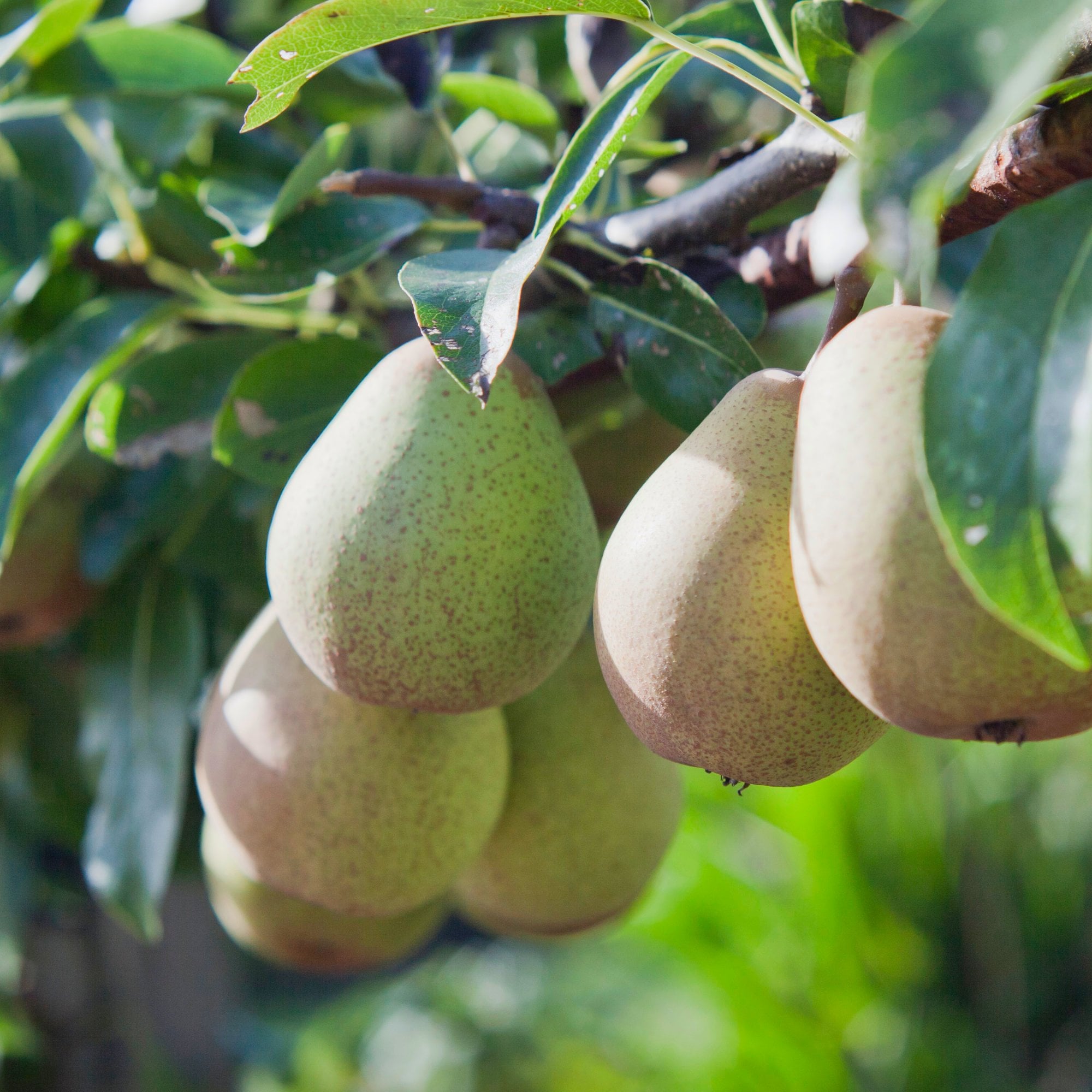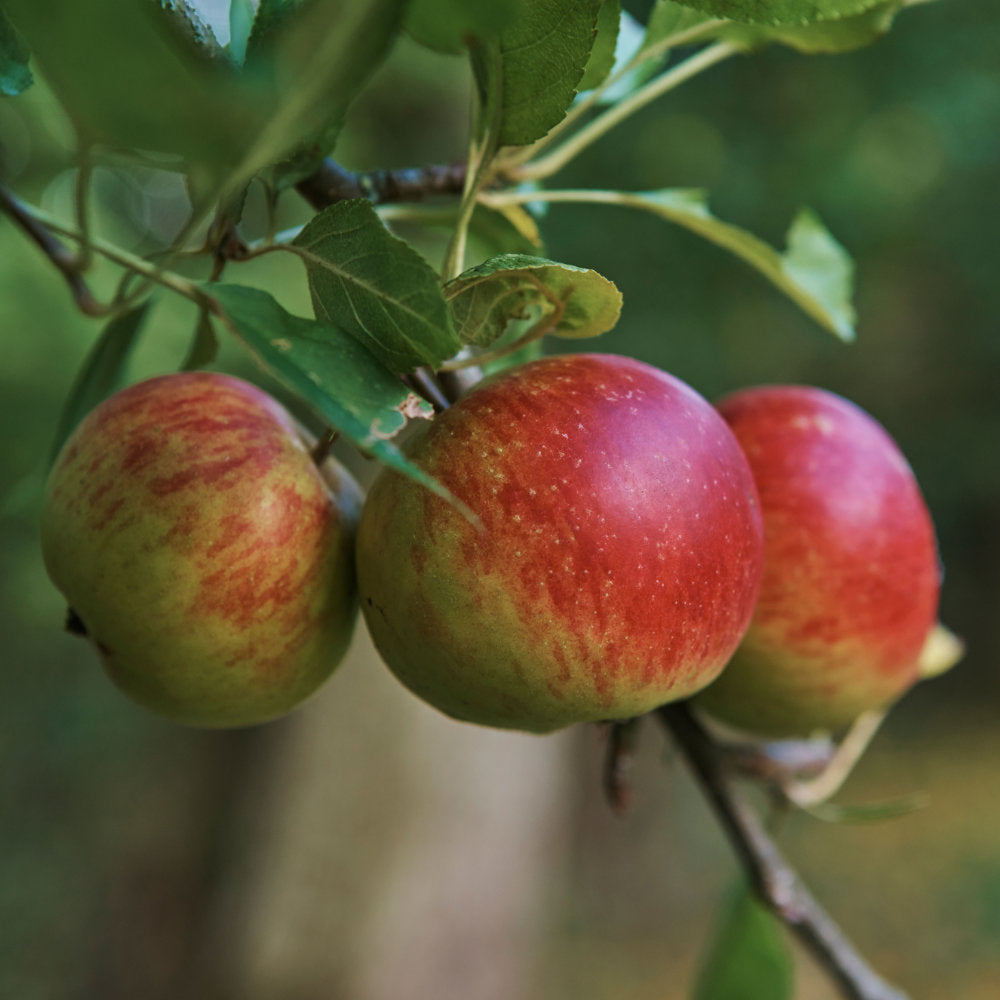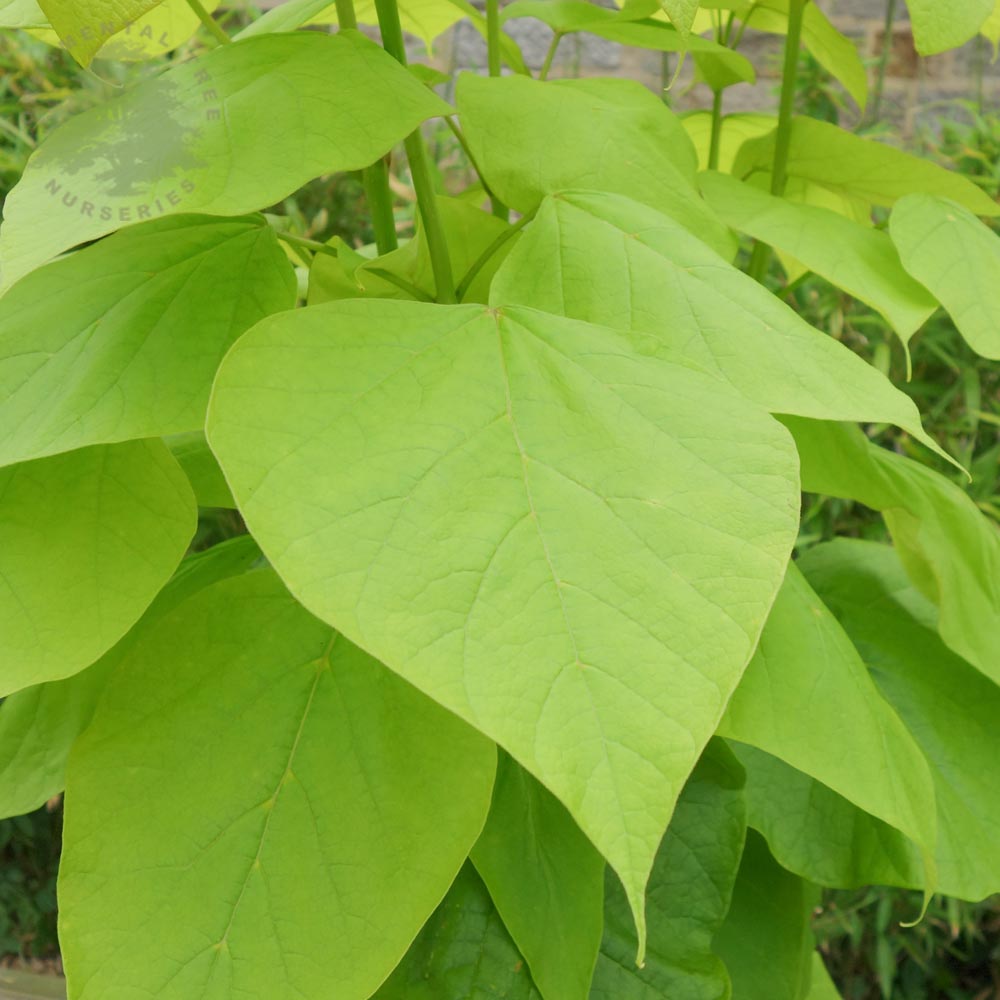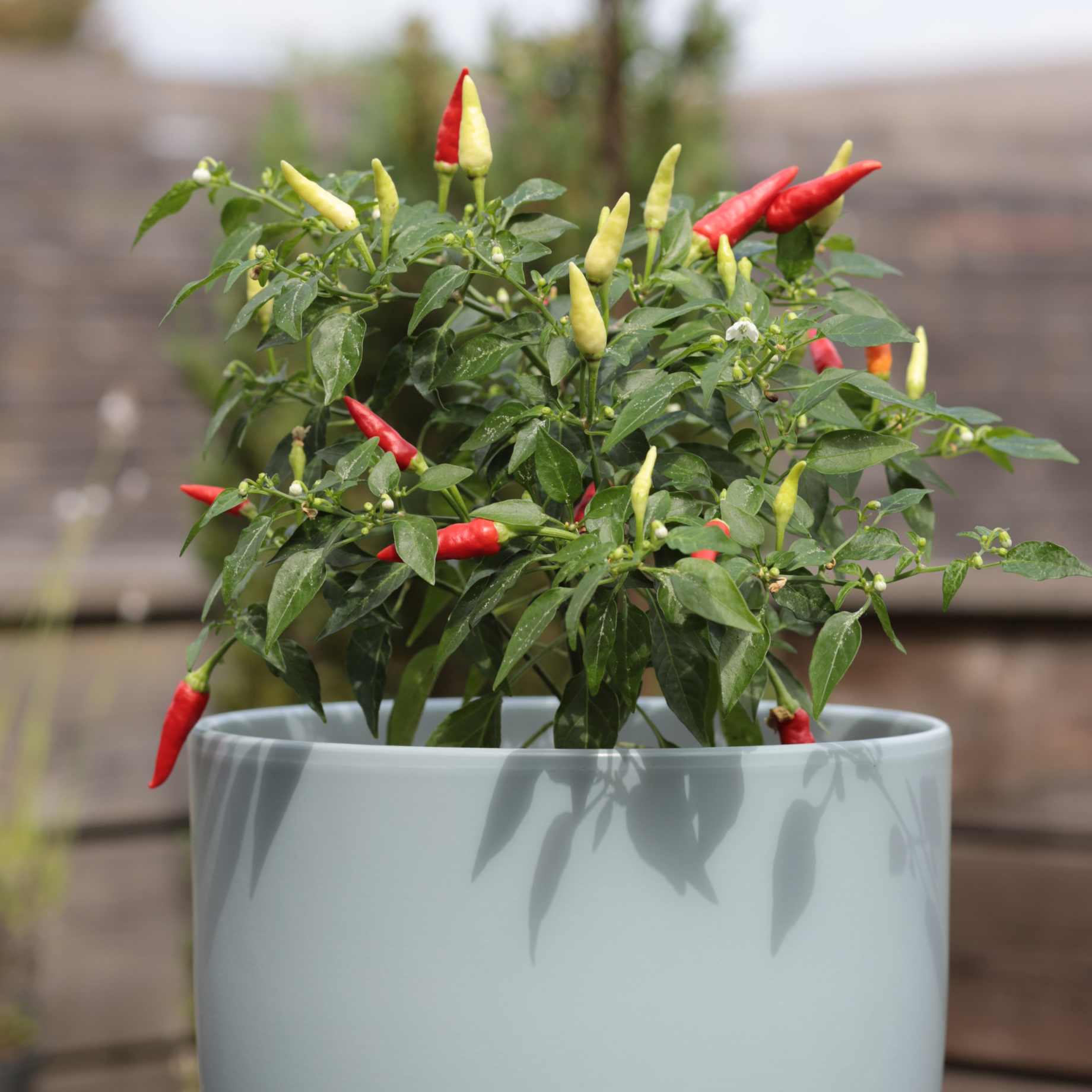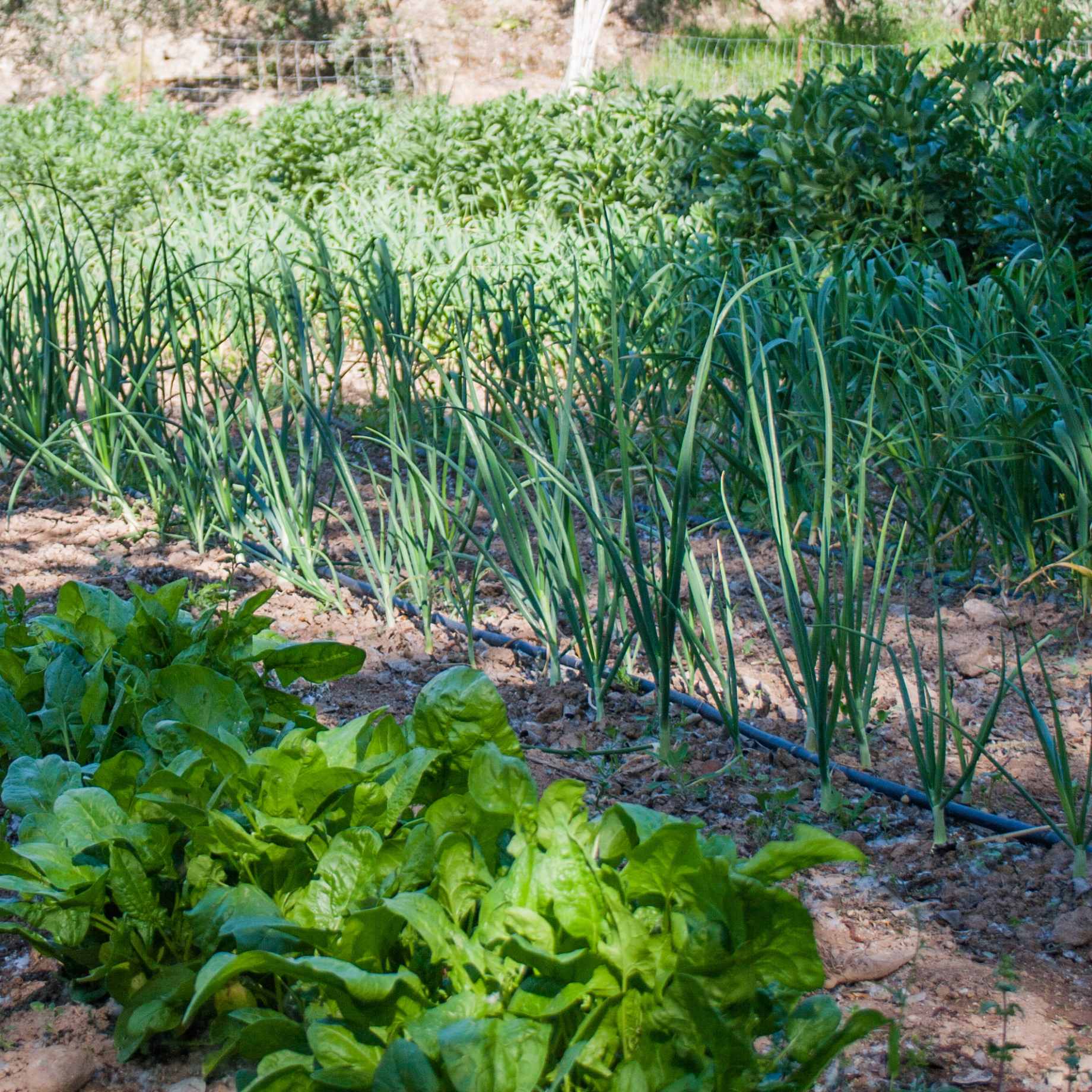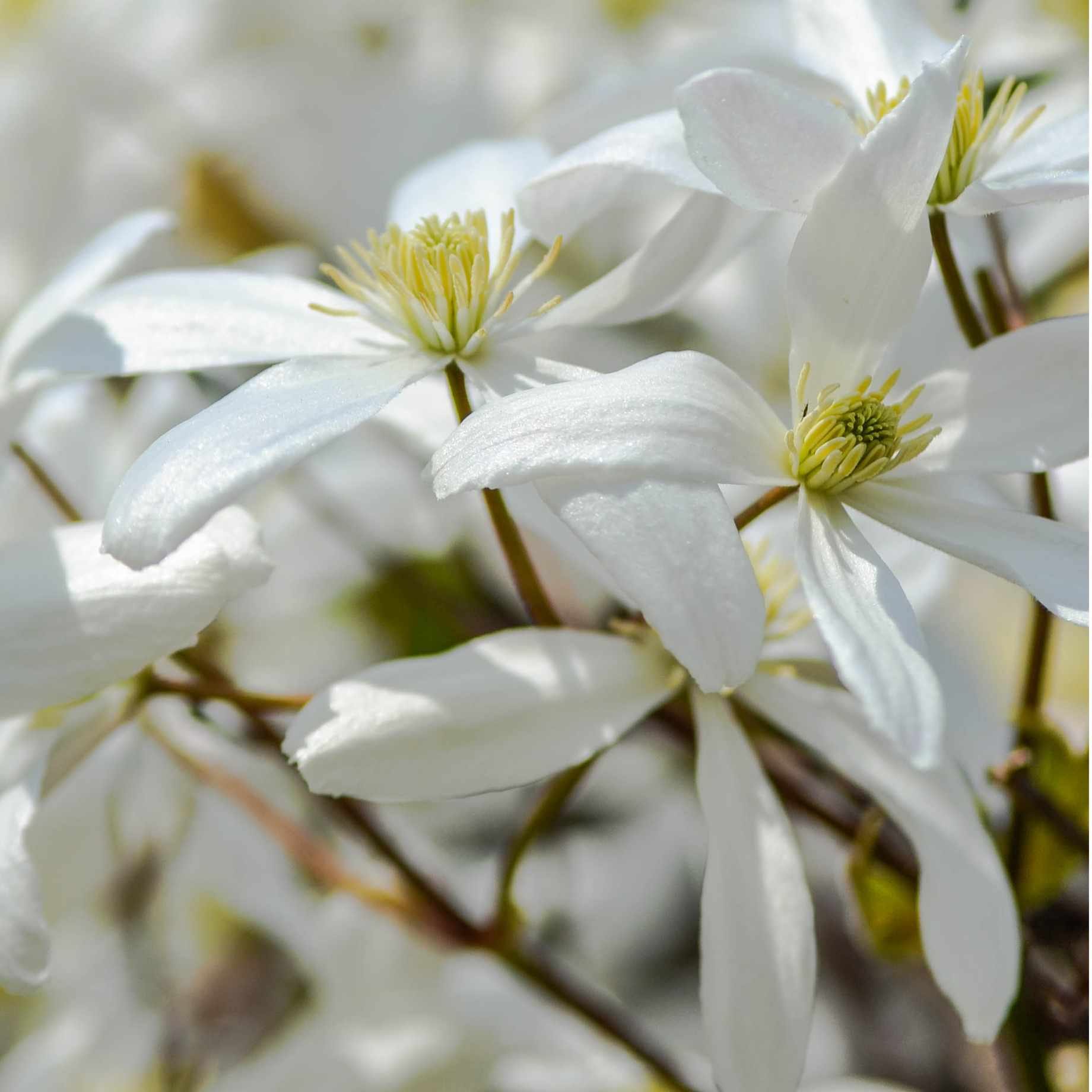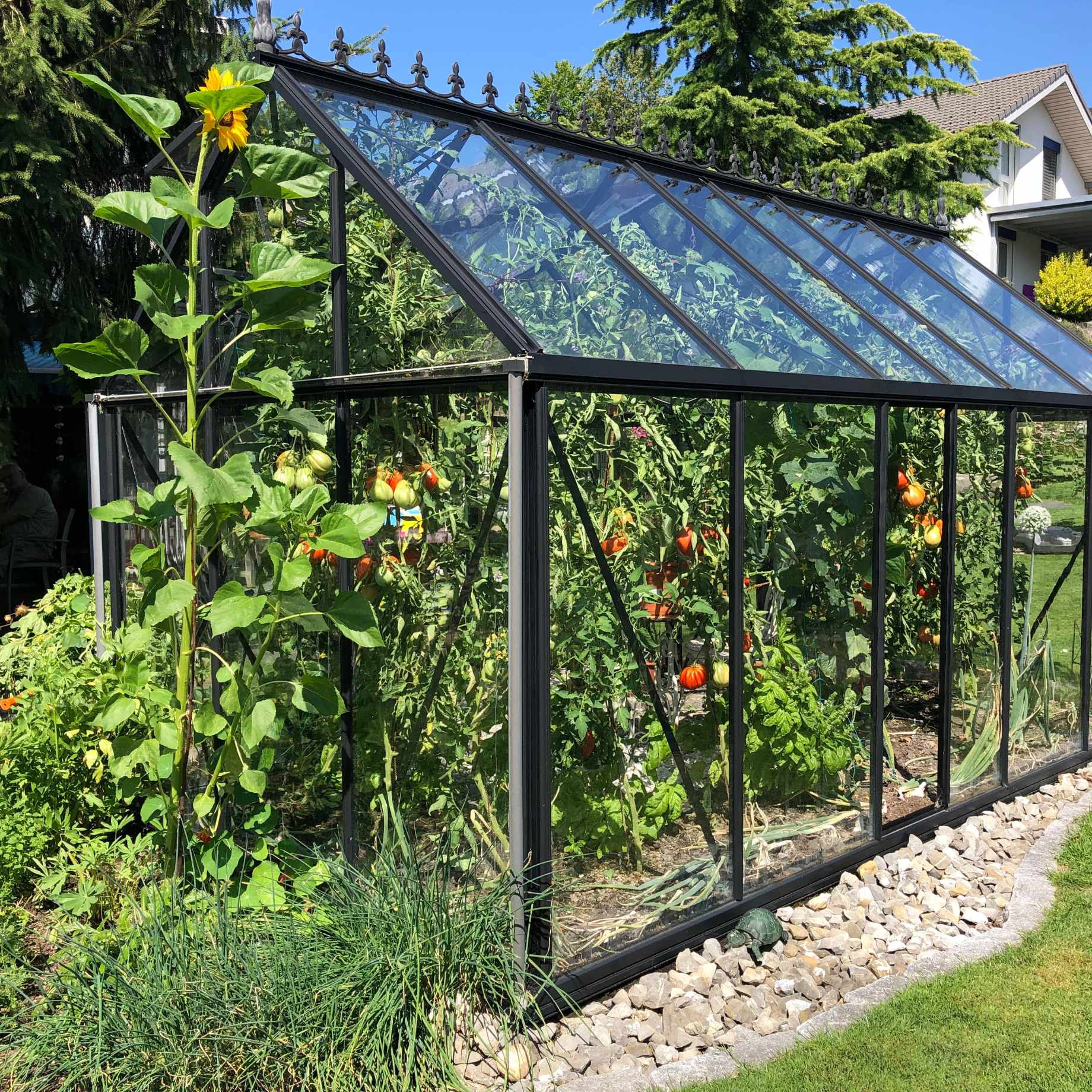Key features
AwardsRHS Award of Garden Merit
Final sizeQuince C (dwarf) 2.5m, Quince A (semi vigorous) 3-3.5m in 10 years
FruitEating pear
Pollination groupGroup B
Cropping periodEarly / mid season (Late August)
Description
Beth Pear trees have white flowers followed by a reliable and heavy crop of attractive eating/dessert pears. In late August, the pears are ready for picking and have a pale green-yellow skin and smooth, sweet, melting flesh.
Not often found in the shops due to the irregularity of the shape and size of the pears, this is no problem at home and Pear Beth is perfect for the garden where it is sure to impress.
Pyrus communis ‘Beth’ pear tree has received the RHS Award of Garden Merit and originates from Kent in 1938.
Planting Steps
1Preparation
- Pot-grown plants can be planted at any time of year, whereas bare roots need to be planted between November and March.
- Clear weeds and grass within a metre of the planting hole.
- Dig a hole as deep as the root mass and twice as wide.
- To help your plant establish more effectively, sprinkle Rootgrow in the hole.
2Planting
- Gently loosen the roots and place into the planting hole.
- Ensure the top of the plant’s compost is flush with the level of the surrounding soil and the graft union or collar of the tree is above ground level.
- Mix 50% of the original soil with 50% compost.
- Fill in the hole, firming the soil gently.
3Last Steps
- Water generously around the base of the plant.
- If you are planting either a single stem tree or mature standard tree, we recommend adding a staking kit and rabbit guard.
Aftercare Advice
Trees and shrubs require a good watering regime for a couple of years whilst they establish. Water well and regularly through spring and summer, increasing in hot or dry weather. If planting in autumn, you may only need to water a little. It is advisable to keep the area free of competing weeds and grass during this period.
For more detailed advice and video guides, please visit our Help & Advice section.

